I prefer to always try and work within boundaries of the framework where I can, it makes life generally easier in the long run.
Swing has begin designed to work with LayoutManagers, this means that the way that Swing updates it's components and communicates these changes is based on the use of the LayoutManagers (more or less).
The following example uses pieces from Java: maintaining aspect ratio of JPanel background image to scale the images and a PropertionalLayoutManager which is designed to try and scale not only the size, but also the position of the components based on the size of the parent container.
The PropertionalLayoutManager demonstrated here will try and layout the components around the center of the parent container. You can change this, but it looks weird - IMHO


import java.awt.BorderLayout;
import java.awt.Component;
import java.awt.Container;
import java.awt.Dimension;
import java.awt.EventQueue;
import java.awt.Graphics;
import java.awt.Graphics2D;
import java.awt.LayoutManager2;
import java.awt.RenderingHints;
import java.awt.Transparency;
import java.awt.image.BufferedImage;
import java.io.File;
import java.io.IOException;
import java.util.Map;
import java.util.WeakHashMap;
import javax.imageio.ImageIO;
import javax.swing.JFrame;
import javax.swing.JPanel;
import javax.swing.UIManager;
import javax.swing.UnsupportedLookAndFeelException;
public class Drums {
protected static BufferedImage SYMBOL;
protected static BufferedImage DRUM;
public static void main(String[] args) {
new Drums();
}
public Drums() {
EventQueue.invokeLater(new Runnable() {
@Override
public void run() {
try {
UIManager.setLookAndFeel(UIManager.getSystemLookAndFeelClassName());
} catch (ClassNotFoundException | InstantiationException | IllegalAccessException | UnsupportedLookAndFeelException ex) {
}
JFrame frame = new JFrame("Testing");
frame.setDefaultCloseOperation(JFrame.EXIT_ON_CLOSE);
frame.setLayout(new BorderLayout());
frame.add(new TestPane());
frame.pack();
frame.setLocationRelativeTo(null);
frame.setVisible(true);
}
});
}
public class TestPane extends JPanel {
public TestPane() {
setLayout(new PropertionalLayoutManager(400, 400));
add(new Symbol(), new PropertionalConstraint(0f, 0));
add(new Symbol(), new PropertionalConstraint(0.67f, 0));
add(new Symbol(), new PropertionalConstraint(0f, 0.4675f));
add(new Symbol(), new PropertionalConstraint(0.67f, 0.4675f));
add(new Drum(), new PropertionalConstraint(0.205f, 0.1f));
add(new Drum(), new PropertionalConstraint(0.5f, 0.1f));
add(new Drum(), new PropertionalConstraint(0f, 0.33f));
add(new Drum(), new PropertionalConstraint(0.705f, 0.33f));
}
}
public class PropertionalConstraint {
private float x;
private float y;
public PropertionalConstraint(float x, float y) {
this.x = x;
this.y = y;
}
public float getX() {
return x;
}
public float getY() {
return y;
}
}
public class PropertionalLayoutManager implements LayoutManager2 {
private Map<Component, PropertionalConstraint> constraints;
private Dimension defaultSize;
public PropertionalLayoutManager(int defaultWidth, int defaultHeight) {
constraints = new WeakHashMap<>(25);
defaultSize = new Dimension(defaultWidth, defaultHeight);
}
@Override
public void addLayoutComponent(Component comp, Object constraint) {
if (constraint instanceof PropertionalConstraint) {
constraints.put(comp, ((PropertionalConstraint) constraint));
}
}
@Override
public Dimension maximumLayoutSize(Container target) {
return preferredLayoutSize(target);
}
@Override
public float getLayoutAlignmentX(Container target) {
return 0.5f;
}
@Override
public float getLayoutAlignmentY(Container target) {
return 0.5f;
}
@Override
public void invalidateLayout(Container target) {
}
@Override
public void addLayoutComponent(String name, Component comp) {
}
@Override
public void removeLayoutComponent(Component comp) {
constraints.remove(comp);
}
@Override
public Dimension preferredLayoutSize(Container parent) {
return defaultSize;
}
@Override
public Dimension minimumLayoutSize(Container parent) {
return preferredLayoutSize(parent);
}
@Override
public void layoutContainer(Container parent) {
int width = parent.getWidth();
int height = parent.getHeight();
double dScaleWidth = getScaleFactor(defaultSize.width, width);
double dScaleHeight = getScaleFactor(defaultSize.height, height);
double scaleSize = Math.min(dScaleHeight, dScaleWidth);
int minRange = Math.min(width, height);
if (width > 0 && height > 0) {
int maxY = 0;
int maxX = 0;
for (Component comp : parent.getComponents()) {
PropertionalConstraint p = constraints.get(comp);
if (p != null) {
Dimension prefSize = comp.getPreferredSize();
prefSize.width *= scaleSize;
prefSize.height *= scaleSize;
int x = Math.round(minRange * p.getX());
int y = Math.round(minRange * p.getY());
comp.setBounds(x, y, prefSize.width, prefSize.height);
maxX = Math.max(maxX, x + prefSize.width);
maxY = Math.max(maxY, y + prefSize.height);
} else {
comp.setBounds(0, 0, 0, 0);
}
}
for (Component comp : parent.getComponents()) {
System.out.println("maxX = " + maxX);
System.out.println("maxY = " + maxY);
if (comp.getWidth() > 0 && comp.getHeight() > 0) {
int x = ((width - maxX) / 2) + comp.getX();
int y = ((height - maxY) / 2) + comp.getY();
comp.setLocation(x, y);
}
}
} else {
for (Component comp : parent.getComponents()) {
comp.setBounds(0, 0, 0, 0);
}
}
}
}
public abstract class AbstractKitPiecePane extends JPanel {
private BufferedImage scaled;
public AbstractKitPiecePane() {
setOpaque(false);
}
public abstract BufferedImage getKitImage();
@Override
public Dimension getPreferredSize() {
return new Dimension(getKitImage().getWidth(), getKitImage().getHeight());
}
@Override
public void invalidate() {
super.invalidate();
if (getWidth() > 0 && getHeight() > 0) {
scaled = getScaledInstanceToFit(getKitImage(), getSize());
} else {
scaled = null;
}
}
@Override
protected void paintComponent(Graphics g) {
super.paintComponent(g);
if (scaled != null) {
int x = (getWidth() - scaled.getWidth()) / 2;
int y = (getHeight() - scaled.getHeight()) / 2;
g.drawImage(scaled, x, y, this);
}
}
}
public class Drum extends AbstractKitPiecePane {
@Override
public BufferedImage getKitImage() {
return DRUM;
}
}
public class Symbol extends AbstractKitPiecePane {
@Override
public BufferedImage getKitImage() {
return SYMBOL;
}
}
protected static BufferedImage getScaledInstance(BufferedImage img, double dScaleFactor) {
BufferedImage imgScale = img;
int iImageWidth = (int) Math.round(img.getWidth() * dScaleFactor);
int iImageHeight = (int) Math.round(img.getHeight() * dScaleFactor);
if (dScaleFactor <= 1.0d) {
imgScale = getScaledDownInstance(img, iImageWidth, iImageHeight, RenderingHints.VALUE_INTERPOLATION_BILINEAR);
} else {
imgScale = getScaledUpInstance(img, iImageWidth, iImageHeight, RenderingHints.VALUE_INTERPOLATION_BILINEAR);
}
return imgScale;
}
protected static BufferedImage getScaledDownInstance(BufferedImage img,
int targetWidth,
int targetHeight,
Object hint) {
// System.out.println("Scale down...");
int type = (img.getTransparency() == Transparency.OPAQUE)
? BufferedImage.TYPE_INT_RGB : BufferedImage.TYPE_INT_ARGB;
BufferedImage ret = (BufferedImage) img;
if (targetHeight > 0 || targetWidth > 0) {
int w, h;
w = img.getWidth();
h = img.getHeight();
do {
if (w > targetWidth) {
w /= 2;
if (w < targetWidth) {
w = targetWidth;
}
}
if (h > targetHeight) {
h /= 2;
if (h < targetHeight) {
h = targetHeight;
}
}
BufferedImage tmp = new BufferedImage(Math.max(w, 1), Math.max(h, 1), type);
Graphics2D g2 = tmp.createGraphics();
g2.setRenderingHint(RenderingHints.KEY_INTERPOLATION, hint);
g2.drawImage(ret, 0, 0, w, h, null);
g2.dispose();
ret = tmp;
} while (w != targetWidth || h != targetHeight);
} else {
ret = new BufferedImage(1, 1, type);
}
return ret;
}
protected static BufferedImage getScaledUpInstance(BufferedImage img,
int targetWidth,
int targetHeight,
Object hint) {
int type = BufferedImage.TYPE_INT_ARGB;
BufferedImage ret = (BufferedImage) img;
int w, h;
w = img.getWidth();
h = img.getHeight();
do {
if (w < targetWidth) {
w *= 2;
if (w > targetWidth) {
w = targetWidth;
}
}
if (h < targetHeight) {
h *= 2;
if (h > targetHeight) {
h = targetHeight;
}
}
BufferedImage tmp = new BufferedImage(w, h, type);
Graphics2D g2 = tmp.createGraphics();
g2.setRenderingHint(RenderingHints.KEY_INTERPOLATION, hint);
g2.drawImage(ret, 0, 0, w, h, null);
g2.dispose();
ret = tmp;
tmp = null;
} while (w != targetWidth || h != targetHeight);
return ret;
}
public static BufferedImage getScaledInstanceToFit(BufferedImage img, Dimension size) {
double scaleFactor = getScaleFactorToFit(img, size);
return getScaledInstance(img, scaleFactor);
}
public static double getScaleFactorToFit(BufferedImage img, Dimension size) {
double dScale = 1;
if (img != null) {
int imageWidth = img.getWidth();
int imageHeight = img.getHeight();
dScale = getScaleFactorToFit(new Dimension(imageWidth, imageHeight), size);
}
return dScale;
}
public static double getScaleFactorToFit(Dimension original, Dimension toFit) {
double dScale = 1d;
if (original != null && toFit != null) {
double dScaleWidth = getScaleFactor(original.width, toFit.width);
double dScaleHeight = getScaleFactor(original.height, toFit.height);
dScale = Math.min(dScaleHeight, dScaleWidth);
}
return dScale;
}
public static double getScaleFactor(int iMasterSize, int iTargetSize) {
double dScale = 1;
if (iMasterSize > iTargetSize) {
dScale = (double) iTargetSize / (double) iMasterSize;
} else {
dScale = (double) iTargetSize / (double) iMasterSize;
}
return dScale;
}
static {
try {
SYMBOL = ImageIO.read(new File("Symbol.png"));
} catch (IOException ex) {
ex.printStackTrace();
}
try {
DRUM = ImageIO.read(new File("Drum.png"));
} catch (IOException ex) {
ex.printStackTrace();
}
}
}
And the images used within the program, for your enjoyment. They live in the same directory the program is run from





